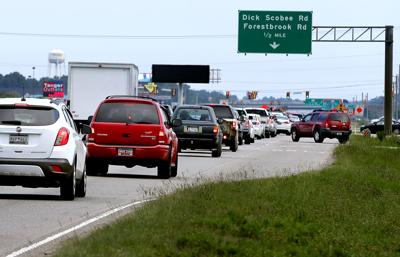The Myrtle Beach Area Chamber of Commerce sent out a news release recently touting the not-particularly surprising news that Horry County residents and chamber members support the chamber’s top legislative priority: squandering billions of mostly federal dollars on a new interstate to the beach that would destroy sensitive wetlands and run parallel to an existing freeway.
Of course, the chamber didn’t describe the long-fantasized Interstate 73 that way. And touting the local support seems a little less bizarre in light of the fight that’s playing out between the Horry County Council and the cities of Myrtle Beach, North Myrtle Beach and Surfside Beach over whether they’ll continue to pledge $23 million a year in hospitality tax revenue to the project. The cities say they still support the project but have better uses for their tax money.
And that’s one of the points: Just as the cities are happy to have a new interstate if someone else pays for it, we suspect that you’d find less support among residents — and even among businesses — if you asked them to underwrite the entire cost of running a new interstate 75 miles from the North Carolina border to Myrtle Beach, set by some projections as high as $4 billion. (We suspect that if you asked those same residents if the chamber’s members should pay all of the taxes for local government services, they’d support that idea as well.)
Currently, there are no plans to spend state funds on I-73. But the local governments are feuding over how to come up with annual payments that are less than 1 percent of the projected cost in current dollars — which suggests that state funds eventually will be expected. And of course the project relies heavily on federal funds, which we all help pay for.
The fact that 80 percent or even 100 percent of Horry County residents want the rest of us to pay for an unnecessarily expensive and environmentally destructive highway is not particularly relevant to whether the state Transportation Department should continue to facilitate the plan. The question isn’t whether locals like the idea but whether it’s a good investment for our state.
It’s probably true that Horry County could use better evacuation routes. But just as Charleston County could get a lot more bang for its buck by investing in, say, flood mitigation, instead of the similarly unnecessary and expensive I-526 extension, Horry County could upgrade the S.C. 38-U.S. 501 corridor to be as useful as an interstate for $147 million to $428 million, according to 2011 projections. Even if you figure the cost has possibly doubled in the past eight years, that’s still just a fraction of the cost of the interstate.
Those savings would be reason enough to abandon the interstate dream even if that were the only consideration. It’s not. Like I-526, the proposed I-73 carries a huge environmental cost.
Environmentalists say construction would impact 324 acres of wetlands and other protected aquatic areas, including the Little Pee Dee Heritage Preserve and Wildlife Management Area, which includes land along the Little Pee Dee River in Marion and Horry counties; it would cut off an important corridor for black bears and fragment other valuable wildlife habitat.
And with a decades-long backlog of crumbling roads and bridges, our state has more crucial uses for our limited road funds, which already are spread too thin because we’ve spent decades building new roads without considering how to come up with the money to keep them in safe working order.







